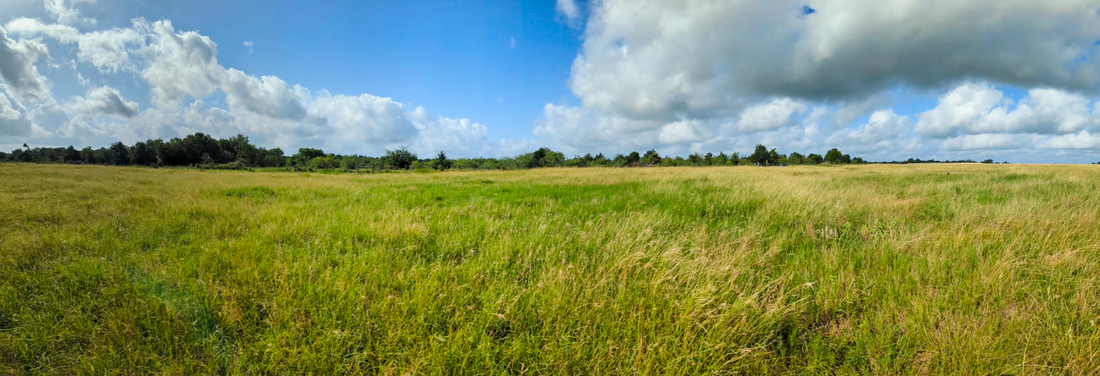
Breaking Ground
Today marks a milestone: we are now the owners of 12 acres of Central Texas land that's destined to grow into a full-scale fig orchard in the years ahead. While we're excited about what's to come, we also know this will be a long journey. Establishing an orchard is a patient undertaking, and we're committed to laying strong groundwork, because good fruit starts at the root.
Choosing the Site
One of the first steps has been selecting the site with intention. Many factors — some visible, some not — went into choosing this particular piece of land. At first glance, it stood out as a contender given its even grade and openness. For fruit trees, that openness matters. Fewer trees nearby means lower pest pressures from woodland creatures like squirrels, and for figs especially, it ensures plenty of sunlight. Figs thrive on 8+ hours of direct light per day, so a clear, open field was just what we were looking for.

Digging Deeper
Of course, growth doesn't just happen above ground. To really understand the land, we sampled the soil — digging 6 to 8 inches deep at a dozen random spots, combining the samples, and sending them off to an ag. lab for analysis. The results confirmed our hopes: land composed of minimally compacted, sandy clay loam, well-suited for fig cultivation.
That's a big improvement compared to the dense Houston black clay of our backyard orchard. While nutrient-rich, black clay is often compacted, which can make it hard for young fig roots to robustly establish themselves. In our backyard, we've had to use a broadfork to break up the soil around each planting site and create a pocket of looser, aerated earth. On the new land, our young fig trees will have a much easier start.
Lessons from the Backyard Orchard
Our smaller backyard orchard has been a testing ground for rare and delicate fig varieties. Because they need more attention than the orchard trees will, we've focused on nurturing them in a more controlled environment. One standout is our Coll de Dama. At just a year old, it's already produced more than a dozen figs this season. Even more impressive, its fruit is sweet and jammy, which is remarkable given that first-fruit from young trees is often tough and bland. Enjoying tasty figs from our Coll de Dama has been a sweet reward for a massive exercise in patience.
Looking Ahead
There's still a lot of work on our plate, but we're eager to ultimately bring fruit to yours, and share what we learn along the way. Stay tuned as we break ground in the orchard, plant the first row of trees, and serve up what we've been cooking in our shared commercial kitchen space!
